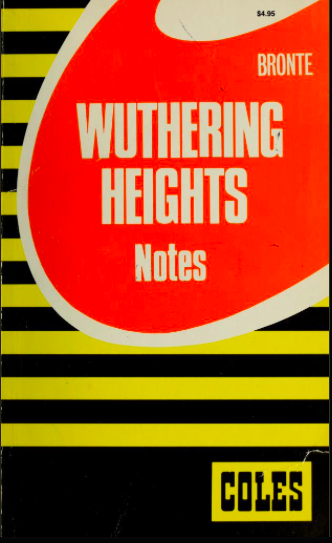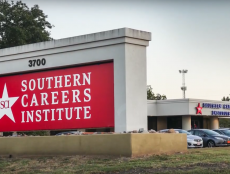
Articles
Editor’s Picks
From Coles Notes to “Compressed Knowledge”: A Condensed History of the Summary
By Cait Etherington
February 22, 2019
getAstract bills itself as the world’s leading provider of “compressed knowledge.” What is “compressed knowledge”? In a nutshell, it is a summary of any essential text or body of knowledge. While it may be the product of recent companies, scholars have been finding ways to compress knowledge since antiquity. So, why are companies like getAbstract and SparkNotes controversial?
Coles Notes and CliffsNotes
Back in the 20th century, students found compressed knowledge in books. Coles Notes, a study guide series published by Coles bookstores in Canada, pioneered the concept in the 1950s. Eventually, Jack Cole and Carl Cole, the founders of Coles, sold the rights for Coles Notes to Clifton Keith Hillegass and Cliff’s Notes (later known as Cliffs Notes and eventually, CliffsNotes) was born. For decades, these two comparable series dominated the compressed knowledge market.

Cover of a Coles Notes edition for Wuthering Heights. Coles Notes were sold by Coles bookstores in Canada. Eventually, the concept was sold and Cliff’s Notes were introduced to the U.S. market.
Image source: Internet Archive.
From the beginning, most educators were never particularly fond of Coles Notes or Cliff’s Notes. A 1965 letter published in the New York Times sums up the average teacher’s feelings about compressed knowledge. Writing about “Cliff’s Notes,” as they were known at the time, English teacher Anna Lou Ennis of Blackwood, New Jersey lamented:
I possess several ‘Cliff’s Notes’ and unfortunately so do many of my students. High school students pool their dollars to acquire enough of these literary desecrations to pass around among themselves and to last them for a year’s worth of book reports. The problem wouldn’t be so acute if students would also read the books. These books act as an aid, a begetter, of cheating. In time, what will become of reading, required or otherwise?
Ennis wasn’t alone in her assessment that aids, such as Cliff’s Notes, may be doing more harm than good in the classroom. Several U.S. universities, including Villanova University, eventually banned the sale of Cliff’s Notes on campus. Of course, this never stopped students from using them at the high school or college level. To be fair, however, Hillegass, the publisher of Cliff’s Notes, never intended his series to be used as a form of cheating.
When Hillegass passed away in 2001, his daughter told the New York Times, “Most people have come to know [Cliff’s Notes] as cheat sheets. He never, ever intended for people to use them that way, as a substitute, because he had such great respect for the works. He just basically wanted to help them get as much out of their education as they could.”
Today, students continue to eagerly consume summaries of everything from Plato’s Phaedrus to Toni Morrison’s Beloved, but these summaries are now found online and increasingly described as compressed knowledge. Their status, however, continues to raise concerns for educators. Whether these summaries circulate in print or online, many educators continue to worry they are a way to support student reading avoidance, and worse yet, cheating.
The Launch of SparkNotes and getAbstract
Since Hillegass’s death in 2001, the industry he helped pioneer has rapidly expanded. While it is still possible to purchase both Coles Notes and CliffsNotes, in an on-demand digital world, most students no longer turn to either series when they need a quick summary of David Copperfield, Wuthering Heights, Catcher in the Rye, or Macbeth. Instead, they go straight to an online equivalent, such as SparkNotes.
Like many startups, SparkNotes, originally called The Spark, was born in a college dorm in the late 1990s. In fact, like Facebook, The Spark ignited at Harvard University. At the time, it was obvious to Sam Yagan, Max Krohn, Chris Coyne, and Eli Bolotin that old-style study guides were dead. Students were increasingly looking for access to free study guides and most importantly, they expected to be able to access these guides anytime and anywhere. Their concept immediately found a strong online following. Within months of the site going live, the founders were already receiving hate mail from students who were angry that SparkNotes hadn’t yet uploaded a summary of the book they needed to read. But as Yagan would later admit to Business Insider, “That’s the best kind of hate mail to get.”
Just three years after SparkNotes launched from a dorm, Yagan and his co-founders sold their startup to Barnes & Noble for $3.5 million. The site was valued as an innovative new concept with a loyal following and as a source of high-quality content. Notably, the original SparkNotes’ summaries had been written by Harvard University students and graduates.
Since 2001, SparkNotes has become the new Coles Notes or CliffsNotes for students at the secondary and postsecondary levels. A 2013 article in The New Republic found reliance on SparkNotes to be nearly universal among students at the high school and undergraduate levels. Not surprisingly, however, the reporter had difficulty finding any students willing to go on the record about their use of the site. After all, while most students rely on SparkNotes from time to time, they also recognize that the dependence is tantamount to cheating. But students aren’t the only people who increasingly rely on summaries to consume more information more quickly.
The same year SparkNotes launched at Harvard University, getAbstract was co-founded by Thomas Bergen, Patrick Brigger, and Rolf Dobelli in Lucerne, Switzerland. Within a year, the company had also launched in the United States. Rather than focus on the student market and employ students and former students as writers, however, getAbstract relied on journalists to develop summaries of materials (texts and videos) for the business sector.
Target audience isn’t the only thing that differentiates getAbstract from SparkNotes, though both companies are in the compressed knowledge business. While SparkNotes has always been free and relies on advertising to generate revenue, getAbstract is a subscription-based provider. Currently, corporate teams pay $999 per year for a subscription to getAbstract’s extensive library of compressed knowledge.
Compressed Knowledge, Cheating, or Tradition?
On Crunchbase, SparkNotes is classified as an eLearning and education company. getAbstract is also classified as an education company. But are these companies, which do help people avoid reading and even cheat, really in the education business? A survey of educators, especially those who teach in the humanities, will reveal that most educators continue to disparage sites such as SparkNotes. But this may be where humanities educators’ own historical shortsightedness is to blame.
Long before SparkNotes and getAbstract–and even long before printed series such as Coles Notes and Cliffs Notes–scholars were producing what may be described as compressed knowledge. As Harvard University professor Ann Blair observed in her 2010 book, Too Much to Know, from antiquity onwards, it was common for scholars to summarize texts as a form of information management. As Blair notes, in the Middle Ages, the summary was embraced as “a method for reducing the material to be mastered, from plot summaries for Attic plays (fourth century BCE) to epitomes and summaries of long prose works.” The practice of producing summaries to aid one’s acquisition of knowledge isn’t just a Western tradition. Blair also notes that study guides designed to help students master large fields of knowledge flourished under the T’ang Dynasty in China from 618 to 907.
So, are compressed knowledge sites such as Sparknotes and getAbstract an aid to support reading avoidance and even cheating or simply an extension of an abstracting tradition that not only predates the internet but also print culture? This short history of the summary suggests that while controversial, compressed knowledge may actually be part and parcel of literate cultures. What has changed over time is simply the demand for summaries and their mode of distribution.
Photo by Thought Catalog on Unsplash.









No Comments